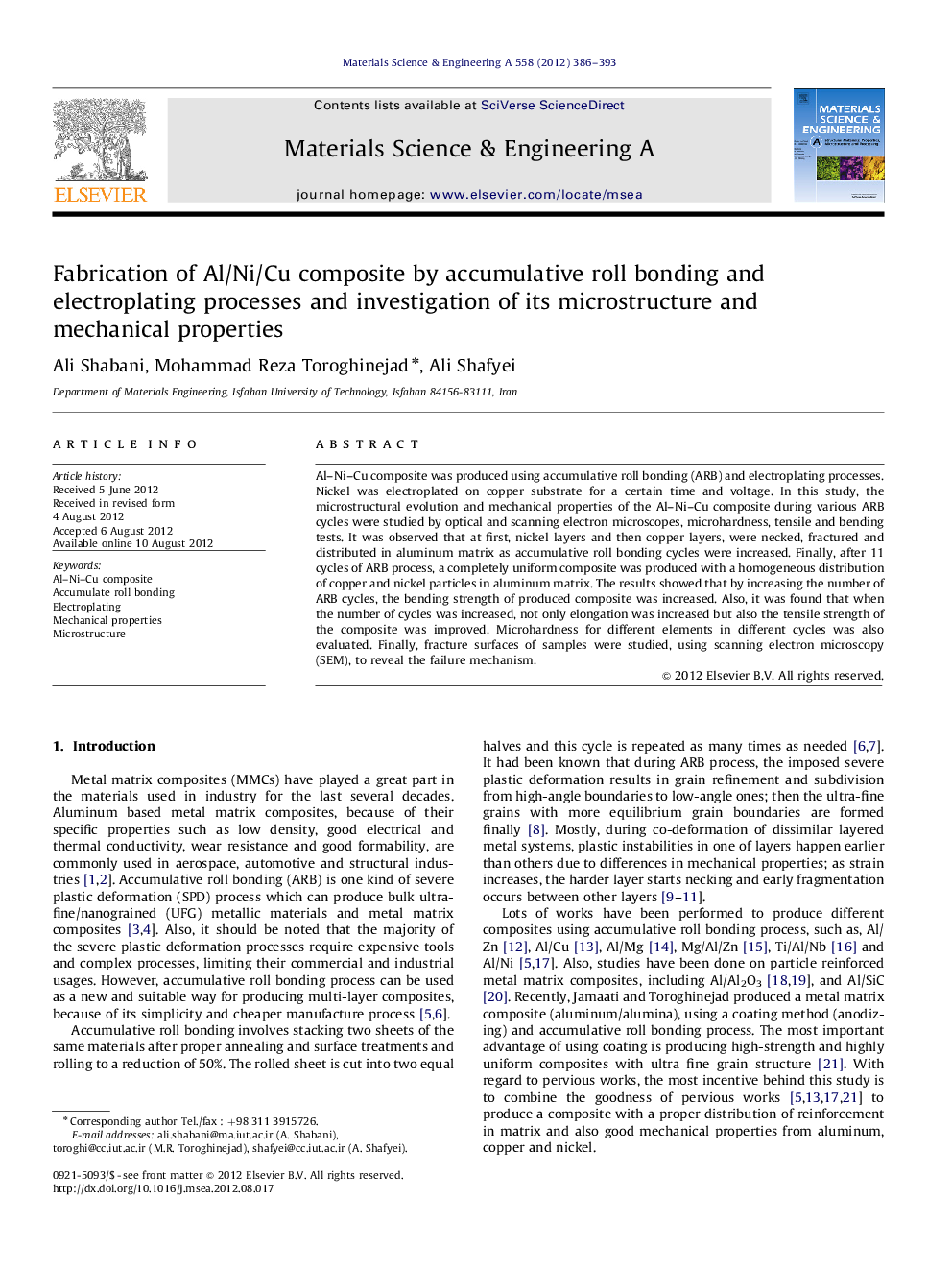| Article ID | Journal | Published Year | Pages | File Type |
|---|---|---|---|---|
| 1576780 | Materials Science and Engineering: A | 2012 | 8 Pages |
Abstract
Al-Ni-Cu composite was produced using accumulative roll bonding (ARB) and electroplating processes. Nickel was electroplated on copper substrate for a certain time and voltage. In this study, the microstructural evolution and mechanical properties of the Al-Ni-Cu composite during various ARB cycles were studied by optical and scanning electron microscopes, microhardness, tensile and bending tests. It was observed that at first, nickel layers and then copper layers, were necked, fractured and distributed in aluminum matrix as accumulative roll bonding cycles were increased. Finally, after 11 cycles of ARB process, a completely uniform composite was produced with a homogeneous distribution of copper and nickel particles in aluminum matrix. The results showed that by increasing the number of ARB cycles, the bending strength of produced composite was increased. Also, it was found that when the number of cycles was increased, not only elongation was increased but also the tensile strength of the composite was improved. Microhardness for different elements in different cycles was also evaluated. Finally, fracture surfaces of samples were studied, using scanning electron microscopy (SEM), to reveal the failure mechanism.
Related Topics
Physical Sciences and Engineering
Materials Science
Materials Science (General)
Authors
Ali Shabani, Mohammad Reza Toroghinejad, Ali Shafyei,
